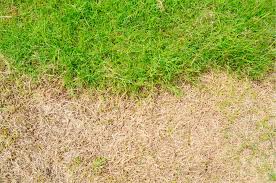Cracking the Code: Is My Lawn Dormant Or Dead?
Read MorePosted on: Dec 13, 2023Luis M Pérez
During winter, it’s common for many types of grass to go dormant rather than die. Dormancy is a survival mechanism that allows the grass to conserve energy during unfavorable conditions such as cold temperatures and reduced sunlight. While the visible signs may resemble dead grass, the roots and crown of the plant remain alive.

Dormant Grass
Dormant grass often appears brown or straw-like, and the blades may lose their lush green color. This is a normal response to winter conditions, and the grass will typically bounce back when temperatures rise and daylight hours increase in spring. To confirm dormancy, inspect the base of the grass blades. Your lawn is likely dormant if they are still green and the crowns are healthy.
Winter dormancy is particularly common in cool-season grasses like Kentucky bluegrass, fescue, and ryegrass. These grass types are adapted to withstand colder temperatures by slowing growth and conserving resources.
To support your lawn during winter dormancy, ensure it receives proper care before the onset of cold weather. This includes adequate fertilization and mowing, and cleaning up leaves and debris. Avoid heavy foot traffic on the grass during dormant periods to prevent damage.
If you’re concerned about the health of your lawn, especially during winter, consider consulting with a local lawn care professional. They can provide insights into your grass type and local climate conditions and recommend winter lawn care practices. A brown or straw-like appearance in winter doesn’t necessarily indicate a dead lawn. Understanding the natural dormancy process and providing appropriate care will help your lawn thrive when the growing conditions improve in the warmer months.
As winter approaches
Adjustments to your lawn care routine are necessary due to many grass types’ colder temperatures and dormancy. Here are general guidelines for when to stop mowing and watering your lawn during winter:
Mowing
Cool-Season Grasses:
Generally, you can gradually reduce the mowing frequency as the grass growth slows. Once the grass has mostly stopped growing, you can typically stop mowing for the winter. However, keep an eye on the grass’s height and mow if it becomes excessively tall to prevent matting and disease issues.
Warm-Season Grasses:
The grass may go dormant during winter in regions with warm-season grasses. You can stop mowing when the grass stops actively growing. Trim it shorter than usual before winter to discourage pests and diseases.
Watering
Cool-Season Grasses:
Reduce watering as the temperatures drop and rainfall increases. Dormant grass requires less water, so monitor soil moisture to avoid overwatering. Watering during freezing conditions can be detrimental.
Warm-Season Grasses:
These grasses may go dormant in winter, requiring less water. Reduce irrigation gradually as the grass enters dormancy. Be cautious not to water during freezing temperatures, which can harm static warm-season grass.
Adjust your mowing and watering schedule based on the specific type of grass in your lawn, local climate conditions, and any recommendations from local lawn care experts. It’s essential to adapt your care practices to the seasonal needs of your lawn to promote its health and resilience. Always check for local guidelines and weather conditions, as they can influence the specific timing for mowing and watering adjustments in your area.
Questions?
For more information on lawn Care? Please email our Doctor Green Lawn Care Expert, Luis Perez, at luisp@doctorgreen.com.

